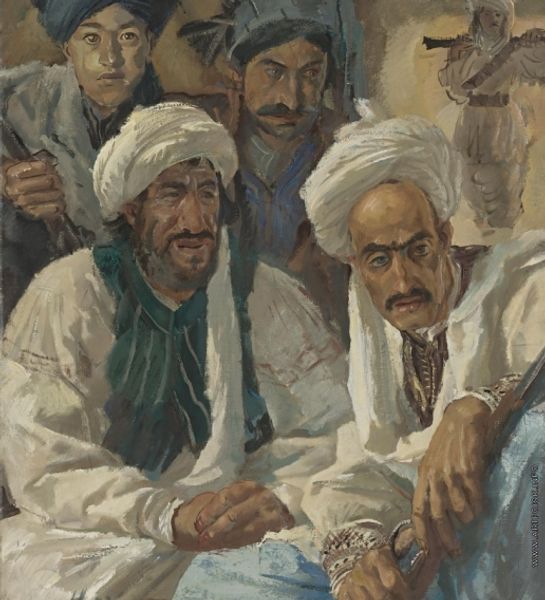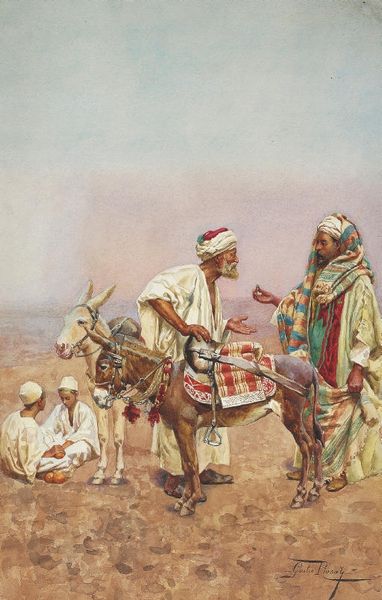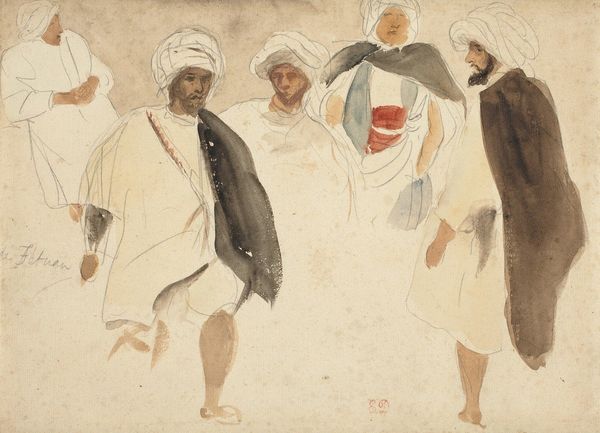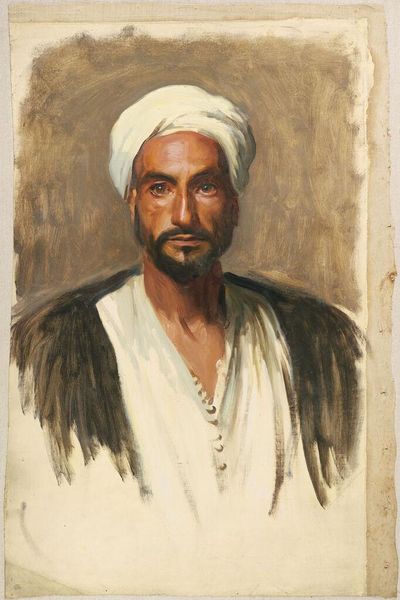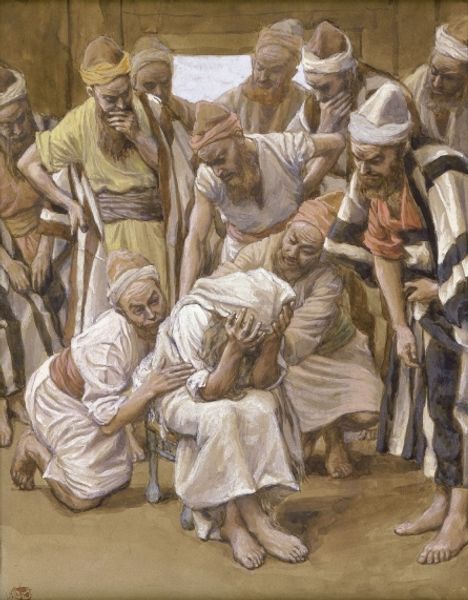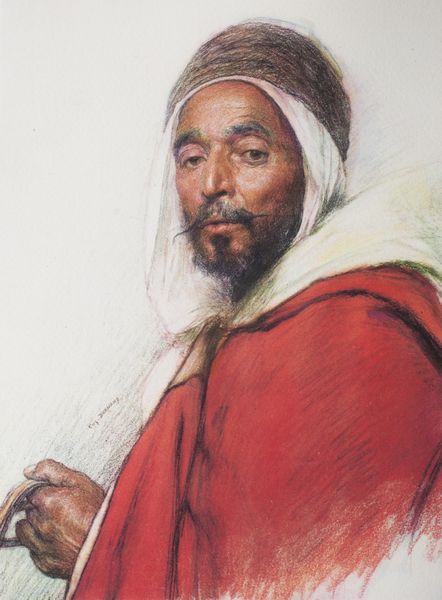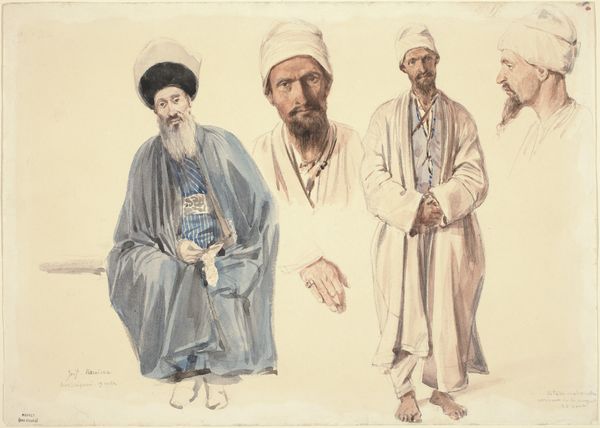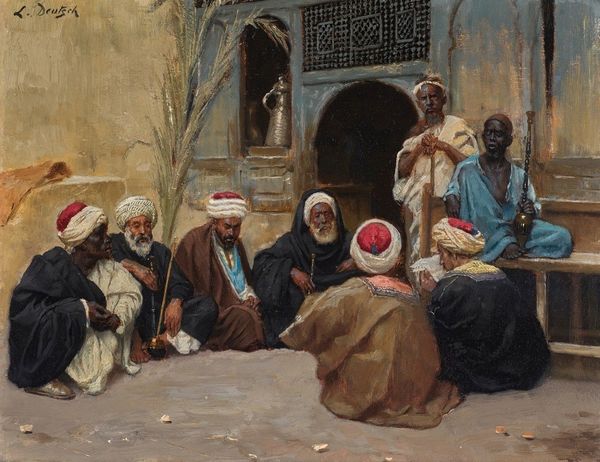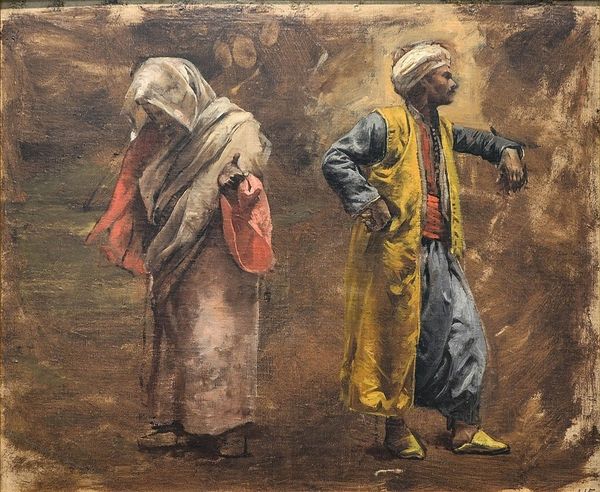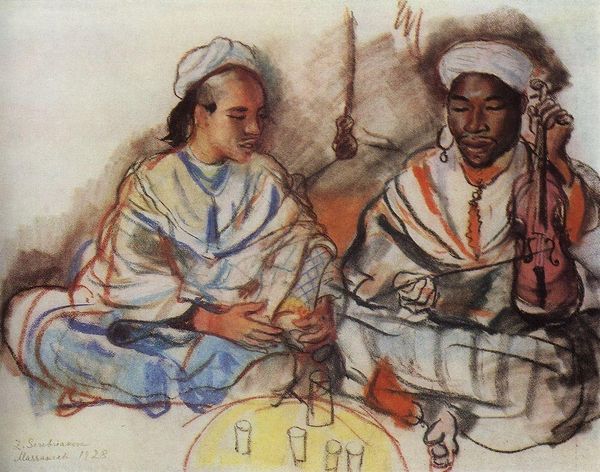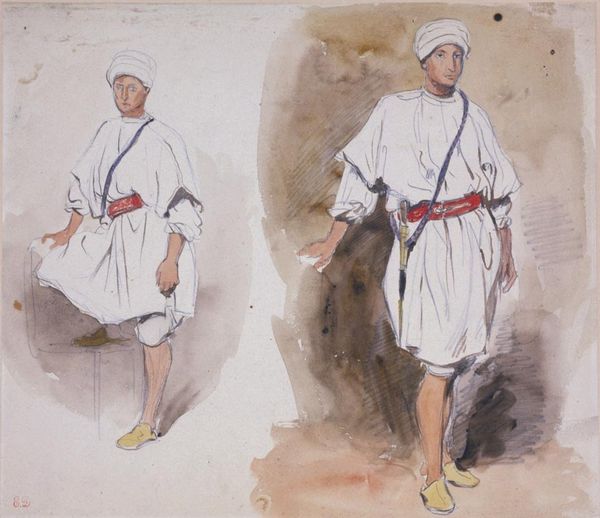
painting, watercolor
#
portrait
#
painting
#
figuration
#
watercolor
#
group-portraits
#
romanticism
#
orientalism
#
genre-painting
Copyright: Public domain
Charles Gleyre painted "Three Fellahin", using watercolor to depict the faces of three Egyptian peasants with great attention to ethnographic detail. The elaborate turbans are of particular interest here. Throughout history, head wraps have signified identity, status, and belonging. We see echoes of this in ancient Mesopotamian depictions of kings, and even in classical sculptures where draped fabrics denote nobility or divinity. These carefully wound turbans in Gleyre's painting speak to something similar – a cultural marker deeply embedded with meaning. Yet here, they adorn the heads of fellahin, laborers. It suggests an assertion of dignity and pride, perhaps a silent commentary on the complex social structures of 19th-century Egypt. The turban itself has a long, cyclical journey. Originating as a practical head covering, it evolved into a symbol of religious and cultural identity, appearing in countless variations across the Islamic world, each with its own story to tell. The way these men wear their turbans becomes a powerful statement, engaging us on a subconscious level. A testament to how clothing – and art – can carry the weight of history and identity.
Comments
No comments
Be the first to comment and join the conversation on the ultimate creative platform.
